Dove Hunting Tips Leave a reply
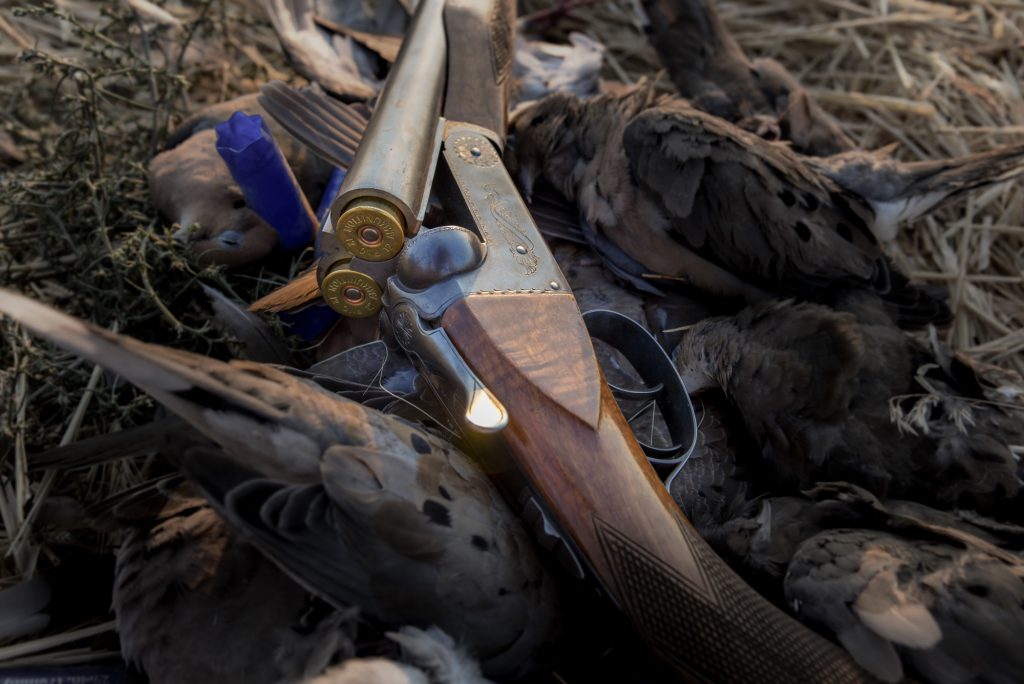
A Few Helpful Tips to Successful Dove Hunting
by Jason Brooks
While loading the shotguns into the truck last week my neighbor asked an inquisitive question, “What are you guys going hunting for?” A one-word reply, “Doves” set him into a tizzy of excitement. Turns out he loves to dove hunt and immediately wanted to join us, but the invite to the private fields was only for my son and I, at least until next year. For those that are regular dove hunters, or even those that have done it a few times understand why all of the excitement. It is fast and furious and fun. Those that have not dove hunted should really give it a try and here are a few tips to get you started.
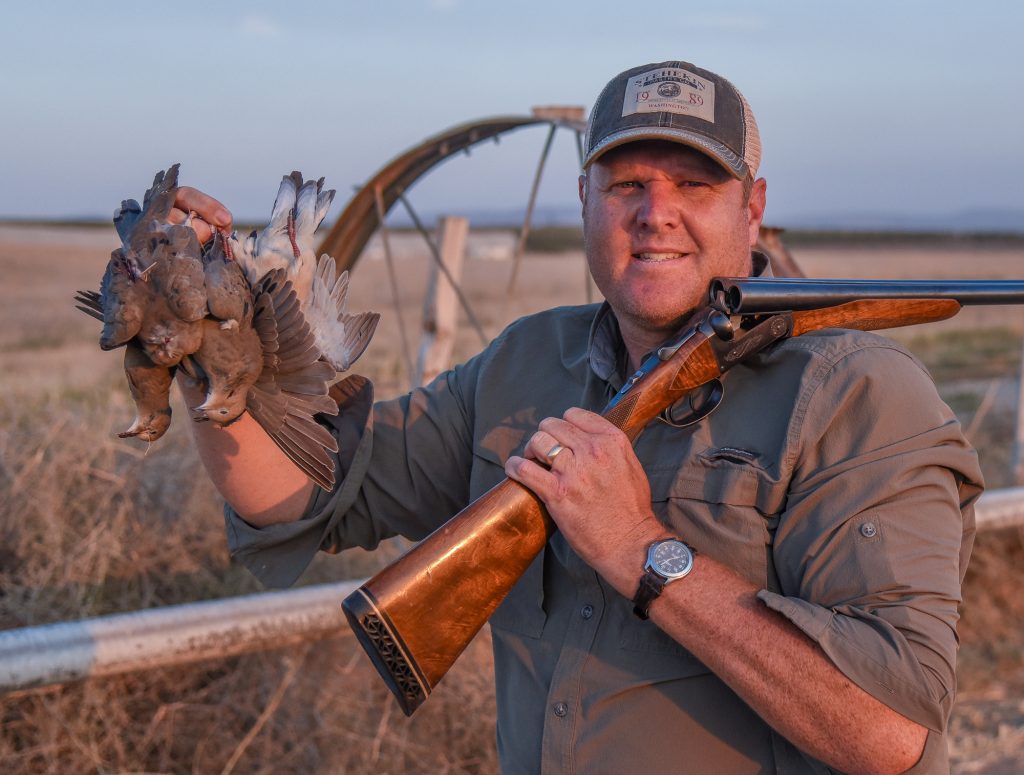
Daily habits.
Doves will roost like any other bird and when the sun comes up they fly to the fields to feed. After feeding they head to water, and then back to feed, roost, water, feed, repeating the cycle all day long. It seems they are always on the move and they move fast. This is what makes it so fun to hunt doves. Knowing that at any minute they could be flying by. Best feeding and watering times are early morning to mid-morning and then again mid-afternoon to evening. During the middle of the day they often roost more often to rest.
Knowing the patterns of the birds means getting to your spot early and waiting for them to come to you. You can do a half day hunt and get plenty of shooting in. Early risers should get set up as the sun rises and those that only have the evening hunt should be there mid-afternoon.
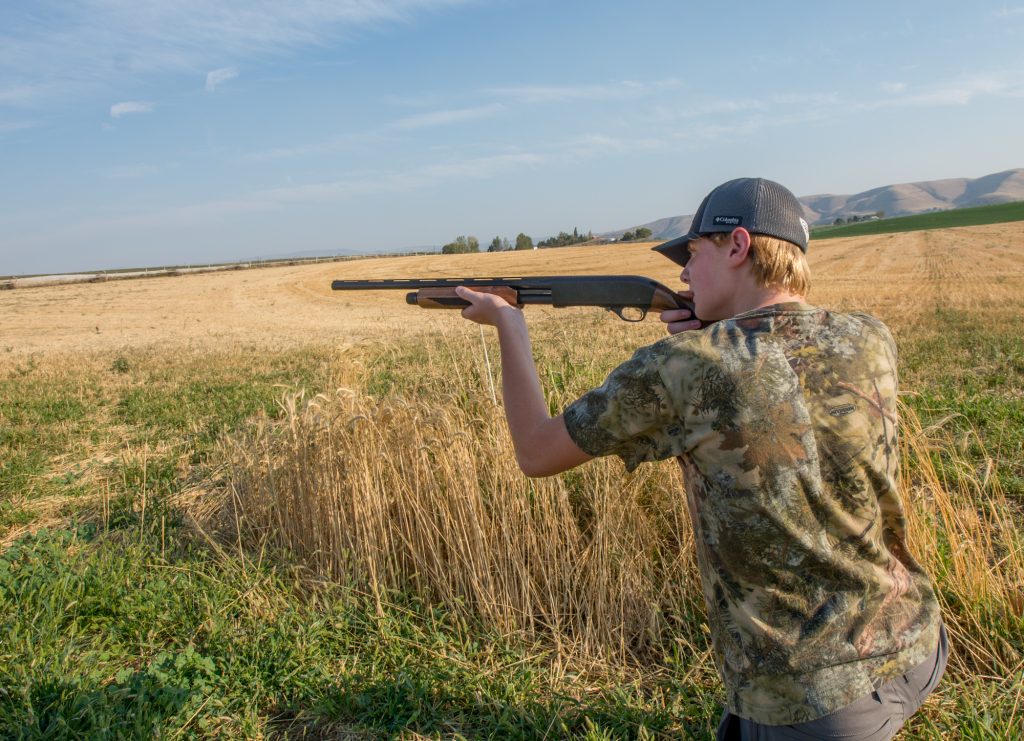
Where to set up.
The small birds like to eat grain, either crops or wild grains that often grow along ditches, creek drainages and edges of fields. If you can find a fence line along the edge of a grain field, then you have a perfect spot. Doves like to sit along fence lines as well as feed along the edge of fields where grain is often not harvested. Often times the sprinkler lines will have a pump attached which is prone to leaking, indicated by green grass and this is a water source near the feeding grounds. If you can set up near the water and the grain you will have doves flying by often.
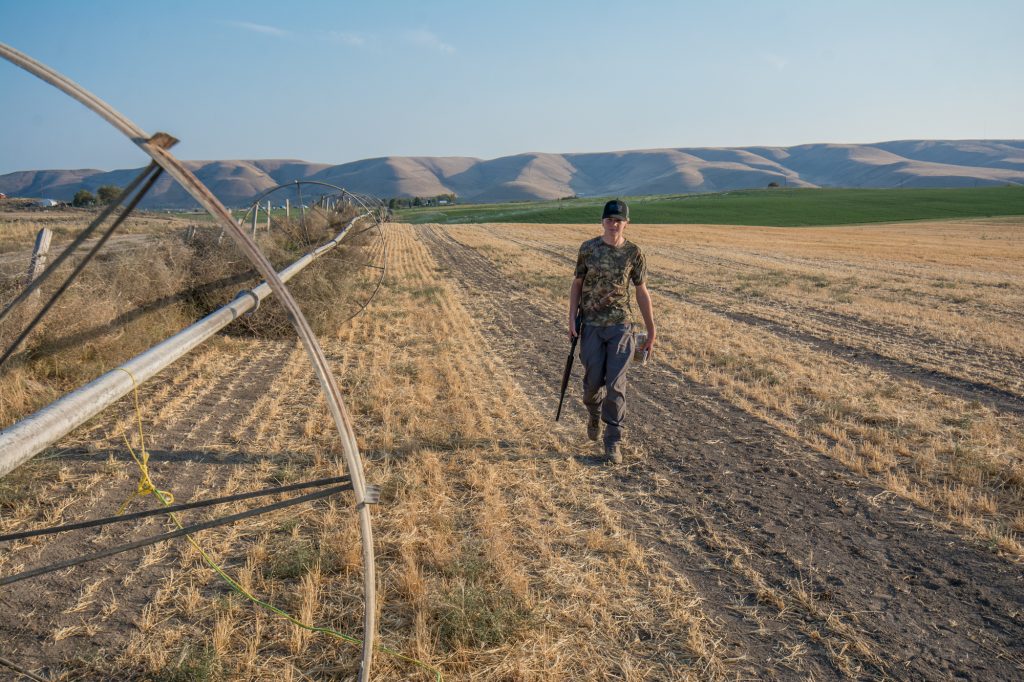
Camo and cover.
Doves have really good eyesight so wearing camo or drab colored clothing helps you blend in to the background. Fence lines also often have tall grasses, tumbleweeds and other cover to help conceal your location. Staying still is one of the best ways to conceal yourself, as the birds are used to seeing farmers and farm equipment. A recent hunt found us sitting on the tires of a sprinkler and birds flew by often as long as we just didn’t move around too much.
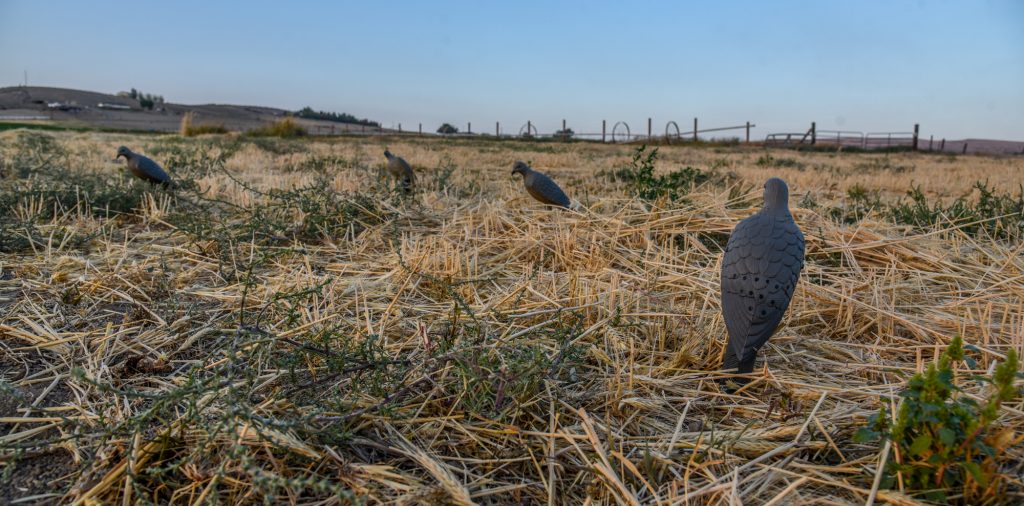
Decoys.
Just like other migratory birds doves are social and like to hang out with other doves. You will often see them flying in pairs or small groups and when they see other doves it comforts them. Doves will come into decoys and they are a great way to get doves to move to your location. When hunting a large field try putting out a few decoy’s close to your stand. Even if there is no grain where you are at the doves will see the decoys and come over to see what they are doing. Most decoys have clothes pins to help clip them to a wire or fence but also placing them on the ground works great.
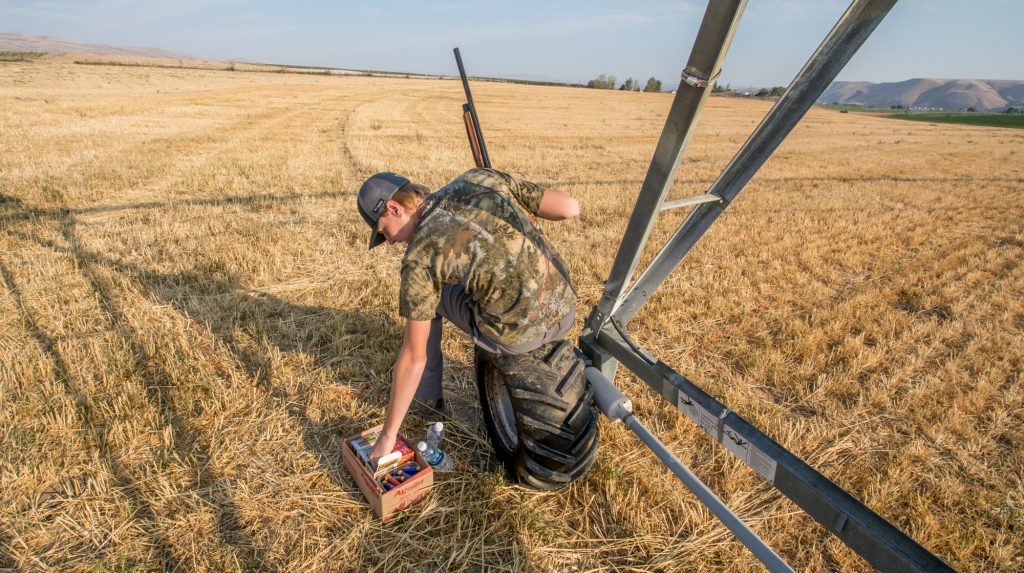
Use the right choke and shot size.
Bring lots of shells and use the right choke.These are small birds that fly fast but it doesn’t take much to knock them out of the air. They are very acrobatic and it is common to see birds veer away as your shotgun wad reveals shot coming their way. Size 7 ½ and 8 shot low brass shells are perfect for dove hunting. Regardless of which gauge you choose to use an open or improved cylinder choke really helps.
Doves are fast flying and provide a lot of shooting action. They are fun to hunt and good to eat, but once the fall frost comes the birds head south. Dove season is often fast and furious just like hunting them.
Jason Brooks -The Outdoor Line Field Editor

